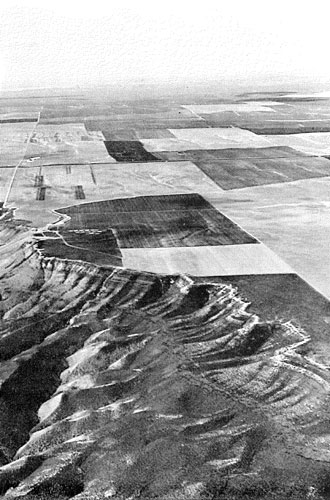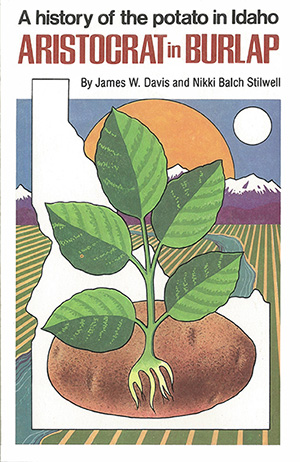 The Bell Rapids development spreads across the plateau.
The Bell Rapids development spreads across the plateau.
The development of sprinkler projects the size of Bell Rapids is obviously not limited to growing potatoes. Crop rotation makes the production of alternate crops such as wheat, barley, alfalfa, and sugar beets a necessity.
The elevation and climatic conditions of the plateau south of the Snake River are favorable for the growing of most Idaho farm commodities. The growing season is of sufficient length for the potato farmer to achieve 400-sack yields as a routine expectation. The average potato yield for the state of Idaho is somewhere between 200 and 300 hundredweight per acre.
The economic impact of a project such as Bell Rapids on the surrounding area is one of increased population, increased employment, increased payment of taxes and a stimulus to all related services and commercial activity. Bell Rapids statistics are impressive in that the property tax paid on the 25,000 acres averages $100,000. During the peak of the growing season, as many as 2,500 people are employed in direct and supporting services. The value of the agricultural crops produced will vary greatly with market prices although, at the time the project was completed, Idaho Power Company estimated the annual production value at $20,000,000.
Bell Rapids had another interesting attribute in that many of the entrymen involved were not professional farmers as such. Under the Desert Entry Act, any U. S. citizen is entitled to file on desert land and the Idaho projects have tended to involve friends, business associates, family members, and relatives. It is quite possible for a professional or businessman to become a desert entryman, fulfill all the requirements of the law and hire a farm management specialist to supervise the production of agricultural crops on the desert entry land.
Allen Noble, one of the three original high-lift reclamation developers, is President of a Boise-based company called Farm Development Corporation. A considerable acreage of the Bell Rapids project was initially managed by Farm Development through contractual arrangements. Interestingly enough, Jack Collins, the pipeline contractor who had built many of the Idaho high-lift projects and a good many of those in the Columbia Basin in Washington, was an entryman in the Bell Rapids project where he and his wife filed on the permitted acreage of desert land. G. T. Newcomb, project manager for the development of Bell Rapids, was listed as one of the persons claiming a homestead. Project attorney K. G. Bergquist was also an entryman. Although Bell Rapids showed early promise of becoming the model of high-lift projects, problems developed that affected the profitability for the owners.


 The Bell Rapids development spreads across the plateau.
The Bell Rapids development spreads across the plateau.